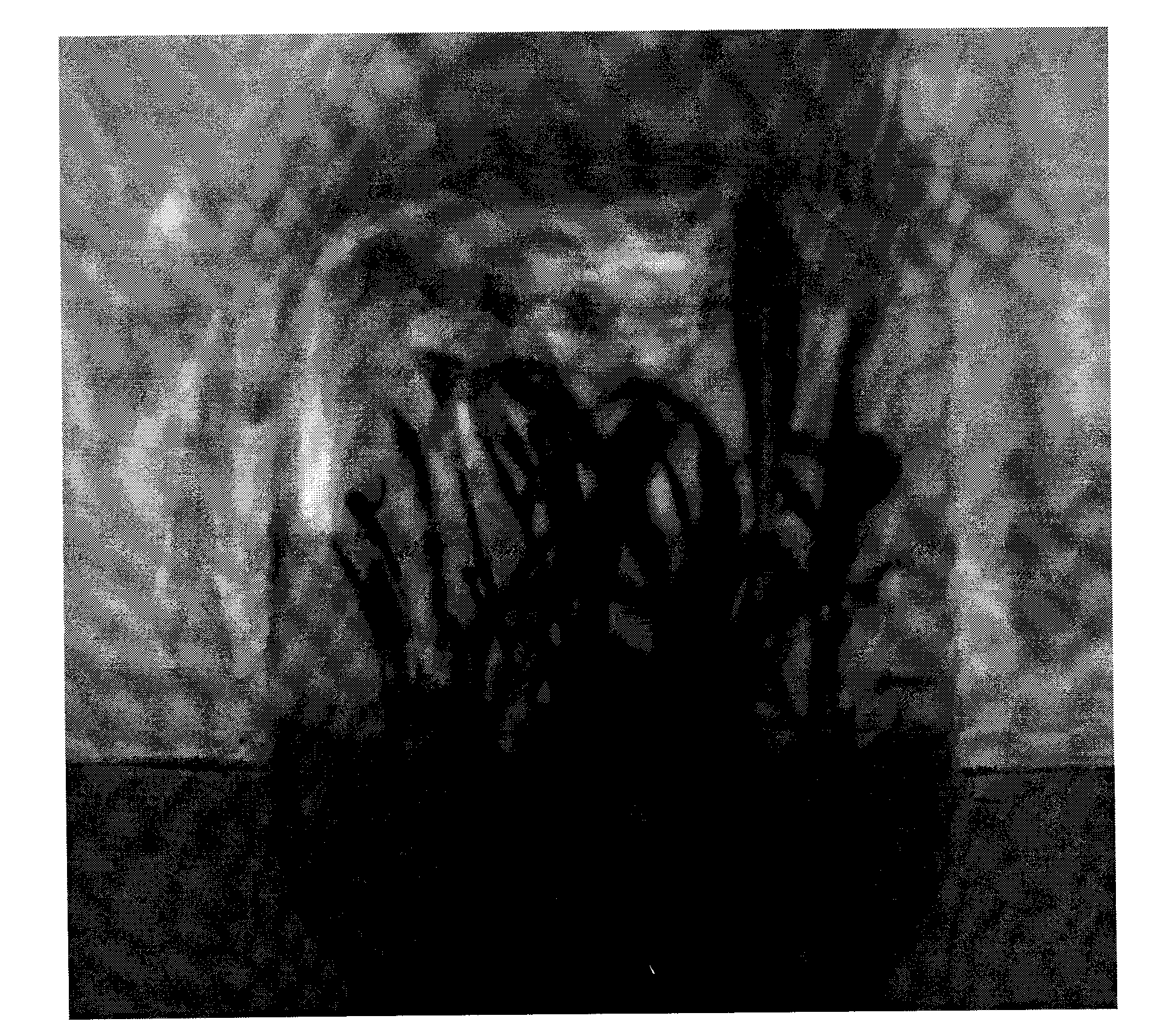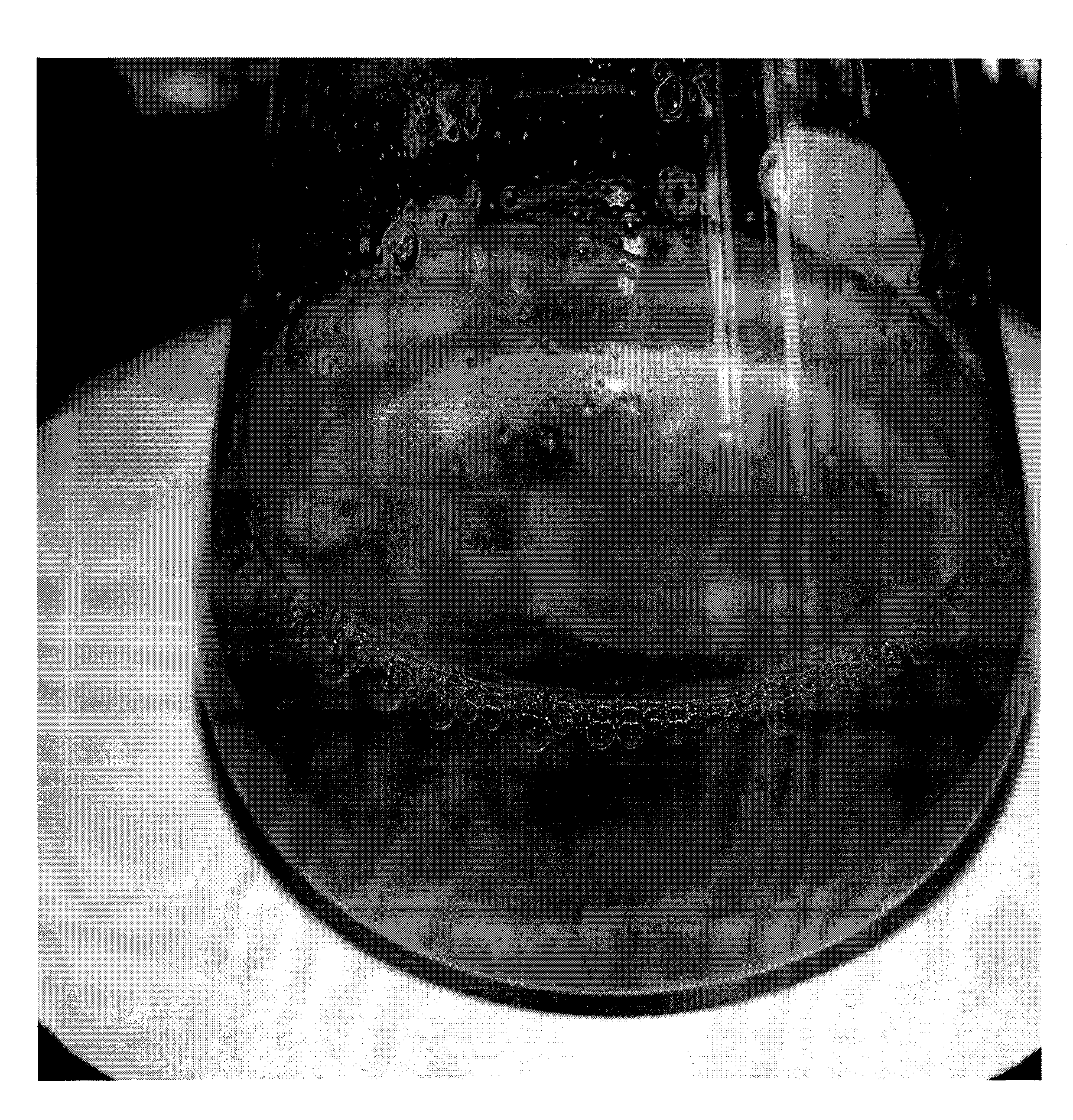Separation and culturing method of saussurea involucrate protoplast
A technology of protoplasts and culture methods, applied in the field of isolation and cultivation of Xinjiang Saussurea sauraceae protoplasts, to achieve the effects of expanding the genetic material base, overcoming incompatibility barriers, and strong regeneration ability
- Summary
- Abstract
- Description
- Claims
- Application Information
AI Technical Summary
Problems solved by technology
Method used
Image
Examples
Embodiment 1
[0030] a. Screen out the full-bodied snow lotus seeds, rinse them with tap water for 2 hours to clean the surface, then soak them in 75% alcohol for 10 seconds on the ultra-clean workbench, sterilize them with 0.1% mercuric chloride for 1 minute, and treat them with 15% hydrogen peroxide. 20min, rinse 3 times with sterile water, and finally soak in sterile water for 10min;
[0031] b. Inoculate the sterile snow lotus seeds treated in step a on the MS medium, the temperature is 23 ± 1°C, the light is 2500lx, the time is 16h / d, and germination begins on 10d;
[0032] c. Cut the cotyledons and true leaves of the aseptic seedlings germinated in step b into 1cm fragments, insert medium MS+NAA 1.0mg / L+6-BA 0.1mg / L+2,4-D 0.1mg / L, placed in a temperature of 23±1°C, light 30001x, time 16h / d, to induce and differentiate embryogenic callus;
[0033] d. Subculture the embryogenic callus that grows rapidly in step c, is bright green in color, has a compact structure and is loosely combin...
Embodiment 2
[0039] a. Screen out the full-bodied snow lotus seeds, rinse them with tap water for 2 hours to clean the surface, then soak them in 75% alcohol for 20 seconds on the ultra-clean workbench, sterilize them with 0.1% mercuric chloride for 3 minutes, and treat them with 15% hydrogen peroxide. 25min, rinse 4 times with sterile water, and finally soak in sterile water for 10min;
[0040] b. Inoculate the sterile snow lotus seeds treated in step a on the MS medium, the temperature is 23 ± 1°C, the light is 28001x, the time is 16h / d, and germination begins on 12d;
[0041] c. Cut the cotyledons and true leaves of the aseptic seedlings germinated in step b into 1.5cm fragments, insert medium MS+NAA 1.2mg / L+6-BA 0.3mg / L+2,4-D 0.2mg / L, placed at a temperature of 23±1°C, illuminated at 3200lx, for 16h / d, to induce and differentiate embryogenic callus;
[0042] d. Subculture the embryogenic callus that grows rapidly in step c, is bright green in color, has a compact structure, and is lo...
Embodiment 3
[0048] a. Screen out the full-bodied snow lotus seeds, rinse them with tap water for 3 hours to clean the surface, then soak them in 75% alcohol for 60 seconds on the ultra-clean workbench, sterilize them with 0.1% mercuric chloride for 10 minutes, and treat them with 15% hydrogen peroxide for 30 minutes , washed 4 times with sterile water, and finally soaked in sterile water for 10 minutes;
[0049] b. Inoculate the aseptic snow lotus seeds treated in step a into hormone-free MS medium, at a temperature of 23 ± 1° C., with a light of 2700 lx, time of 16 h / d, and germinate on 15 d;
[0050] c. Cut the cotyledons and true leaves of the aseptic seedlings germinated in step b into 2cm fragments, insert medium MS+NAA 1.5mg / L+6-BA 1.0mg / L+2,4-D 0.5mg / L L, placed in a temperature of 23±1°C, light of 3800 lx, and time of 16 h / d, to induce and differentiate embryogenic callus;
[0051] d. Subculture the embryogenic callus that grows rapidly in step c, bright green in color, compact i...
PUM
 Login to View More
Login to View More Abstract
Description
Claims
Application Information
 Login to View More
Login to View More - R&D
- Intellectual Property
- Life Sciences
- Materials
- Tech Scout
- Unparalleled Data Quality
- Higher Quality Content
- 60% Fewer Hallucinations
Browse by: Latest US Patents, China's latest patents, Technical Efficacy Thesaurus, Application Domain, Technology Topic, Popular Technical Reports.
© 2025 PatSnap. All rights reserved.Legal|Privacy policy|Modern Slavery Act Transparency Statement|Sitemap|About US| Contact US: help@patsnap.com



